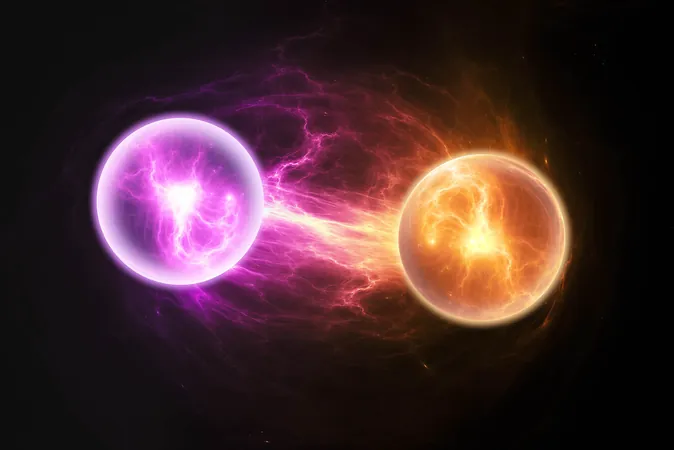
Scientists Measure the Lightning Speed of Quantum Entanglement - And It's Beyond Comprehension!
2025-03-24
Author: Kai
Recent advancements in quantum physics have led researchers to challenge our traditional understanding of instantaneous events. While we once thought that phenomena like quantum entanglement occurred without delay, cutting-edge experiments reveal that there are measurable intervals involved—even in these lightning-fast occurrences.
The discovery of attosecond measurements—a duration so minuscule that it equals one quintillionth of a second—has opened new avenues of exploration in the realm of quantum mechanics. To put this into perspective, light can only travel a mere fraction of a millimeter in this short span. This breakthrough allows scientists to observe and analyze processes, such as how electrons are extracted from their atomic nucleus and how pairs become entangled, affording insights that could revolutionize quantum communication and computing technologies.
Decoding the Quantum Dance of Electrons
Quantifying the precise moments when particles interact can inform our understanding of both theoretical and practical applications in the quantum realm. A team of scientists led by Professor Joachim Burgdörfer of the Institute of Theoretical Physics at TU Wien has recently published findings in *Physical Review Letters* that delve into how entanglement arises on ultrafast timescales. They focus on understanding how entanglement emerges rather than just aiming to preserve it.
The experimental approach involves bombarding atoms with intense, high-frequency laser pulses that expel electrons. As these electrons leap away, their interactions lead to instant correlations—an incredible phenomenon that can be measured across distances. According to Burgdörfer, the time at which an electron departs affects the state of the remaining electron in its atom, firmly entangling them in a relationship where the actions of one instantaneously affect the other.
What’s remarkable is that the study suggests that the 'birth' of the departing electron is inherently uncertain; in quantum terms, it exists in a superposition of states. This means it has left the atom simultaneously at several different times, leading to an average time difference of about 232 attoseconds.
The Implications for Quantum Technology
Grasping the mechanics of how entanglement is established could hold the key to breakthroughs in quantum encryption and computing. As researchers work to pinpoint the birth moments of these entangled particles, we could see future technologies that exploit these correlations with unprecedented efficiency. Knowing precisely when and how these particles become linked promises to refine current methods of generating entangled states, thus enhancing secure data transfer.
Understanding how two electrons become correlated at such minute intervals opens exciting experimental opportunities. With laser technology continually advancing, scientists envision the possibility of capturing yet-to-be-measured moments that hint at the ephemeral beginnings of quantum events.
As investigations continue, international research teams collaborate to validate these astonishing findings in labs worldwide. The potential applications of mastering entanglement timing have far-reaching implications not only in quantum theory but also in practical technologies we encounter in daily life.
In conclusion, the realization that quantum events are not purely instantaneous but have measurable durations suggests there is still much to learn. These attosecond-scale insights present exciting prospects for redefining how we construct and optimize quantum systems, pushing the boundaries of both fundamental physics and applied technologies.
Stay tuned as researchers embark on this groundbreaking journey of discovery—who knows what the future holds for our understanding of the quantum world!

 Brasil (PT)
Brasil (PT)
 Canada (EN)
Canada (EN)
 Chile (ES)
Chile (ES)
 Česko (CS)
Česko (CS)
 대한민국 (KO)
대한민국 (KO)
 España (ES)
España (ES)
 France (FR)
France (FR)
 Hong Kong (EN)
Hong Kong (EN)
 Italia (IT)
Italia (IT)
 日本 (JA)
日本 (JA)
 Magyarország (HU)
Magyarország (HU)
 Norge (NO)
Norge (NO)
 Polska (PL)
Polska (PL)
 Schweiz (DE)
Schweiz (DE)
 Singapore (EN)
Singapore (EN)
 Sverige (SV)
Sverige (SV)
 Suomi (FI)
Suomi (FI)
 Türkiye (TR)
Türkiye (TR)
 الإمارات العربية المتحدة (AR)
الإمارات العربية المتحدة (AR)